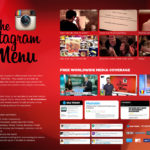(British Airways – Happiness Blanket)
This summer British Airways (BA) conducted a new way to measure their customers’ experiences during the flight, adopting a creative technology. They distributed the so-called ‘Happiness Blanket’ to passengers with matching head gear, which sensed electrical changes in the passengers’ neurons depending on various situations: when the flight was taking off and landing in, and when the passengers were sleeping, eating meals, and watching BA’s entertainment programmes. When the passengers felt nervous the hairbands noticed it and sent signals to the blankets, which then changed the colour of the blankets into red. In opposite situations, when the customers were relaxed and happy the colour turned into purple-ish blue.
Although it is a novel idea to evaluate customers’ experiences, it seems it is, yet, rather early to officially adopt the technology. The fact that customers have to wear the band around their heads all the time can be a little bit off-putting and the bright light on the blankets can also affect customers’ neural status, for example when they try to sleep in dark. This can influence on the precise measurement as a variable.
Another limitation about ‘Happiness Blanket’ is the results from this fancy and rather extravagant experiment sound too general. All the presented findings do not necessarily require the technologically advanced evidence; it is a common sense that people feel happier when watching light and entertaining movies or having meals, as they become relaxed without high level of stress factors. On the other hand, people feel anxious when watching scary or heavy-themed movies or when flights are taking off and landing in the ground. These situations have already been supported by ample psychological studies, and as one can easily imagine would be the case.
The final possible negative point is that the results cannot be directly compared with the other competitors’ analyses, unless the competitors also bring in this new tool. It might not be a huge issue in that British Airways can still tinker with the findings to improve their service quality. However, this will not enable them to describe how superior their service is to those of the other competitors, or to notice what their relative disadvantages are.
Nevertheless, this new technology contains a bright potential in that it has given the industry an innovative method to measure the level of customer experiences. Once the technology becomes more developed the depth of data collection will be improved, which will allow more creative and insightful marketing strategies.
This inspiring device can also visually and quite accurately explain – via the colour spectrum – the subjective definition of ‘comfortableness’ when it comes to how comfortable each passenger is, where lingual descriptions have limitations. Normal customer satisfaction surveys cannot distinguish if the same answer of ‘very satisfied’ between a given passenger A and the B would actually mean the same level of satisfaction, because these they might not have the same level of ‘satisfactory point’. In contrast, the colour spectrum on the blankets can differentiate the subtle differences among the passengers’ status. This can also present from which point their comfortable moments start and how long they last. With these in mind, someday in the future British Airways will be able to offer truly superior qualities in their services to customers.
You can find the information on British Airways’ website: https://www.britishairways.com/en-gb/offers/partners/happiness-blanket?DM1_Mkt=GLOBAL&DM1_Channel=SOCIAL&DM1_Campaign=UKQ3JULYHAPPINESSBLANKET&DM1_Site=YOUTUBE&utm_source=YOUTUBE&utm_medium=SOCIAL&utm_campaign=UKQ3JULYHAPPINESSBLANKET
